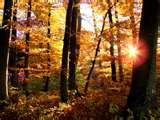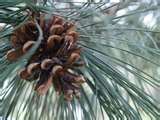Tree Study – Autumn
During Autumn the attention should be attracted to the leaves by their gorgeous colors. Use this interest to cultivate your knowledge of the forms of leaves of trees and the species of the tree from where they came from.

Autumn Work
What is the color of the tree in its Autumn foliage? Sketch it in your Nature Study Journal in water colors or colored pencils showing the shape of the head of the tree and the relative proportions of the head and trunk.
Describe of what you can see of the tree’s roots. How far do you suppose the roots reach down? How far out at the sides do they go? In how many ways are the roots useful to the tree? Do you suppose, if the tree were turned up side down, that it would show as many roots as it now shows branches?
Describe a leaf from your tree, paying special attention to its shape, its edges, its color above and below, its veins or ribs, and the relative length and thickness of its petiole. Are the leaves set opposite or alternate on the twigs? As the leaves begin to fall, can you find two which are exactly the same in size and shape?
Draw in your Nature Study Journal the two leaves which differ most from the same tree. At what date do the leaves begin to fall from your tree? At what date are they all off the tree?
Evergreen Trees
In Autumn evergreen trees stand out the most in a landscape where deciduous trees are also, since the deciduous trees lost their leaves. Why are Evergreen trees evergreen? If you look closely you will see that all these trees have needles or scaly leaves that are short and spiked. Needles do not freeze in winter, since the water inside them contains a kind of antifreeze, and they continue to produce enough chlorophyll to stay green. Needles do drop off, but they do primarily in late spring. Evergreen trees are also called conifers, for they bear cones that house the tree’s seeds. There are two seeds inside each scale of the cone. Locate some evergreens in your area and identify what kind they are. Draw them and include your information about them in your Nature Study Journal.

